Timbre
Contributions by Interviewees
- Michel Arrignon
- Paolo Beltramini
- François Benda
- Billard 1, 2,
- James Campbell
- Philippe Cuper
- Eli Eban
- Steve Hartman 1, 2
- Sylvie Hue 1, 2, 3
- Gerald Kraxberger
- Heinrich Mätzener
- Ernesto Molinari
- John Moses
- Pascal Moraguès
- Harri Mäki
- Thomas Piercy 1, 2
- Frédéric Rapin 1, 2
- Milan Rericha
- Ernst Schlader
- David Shifrin, 1, 2, 3, 4
- Richard Stoltzman 1, 2, 3
- Jérôme Verhaeghe 1, 2
- Michel Westphal 1, 2
Definition and Analysis of Timbre
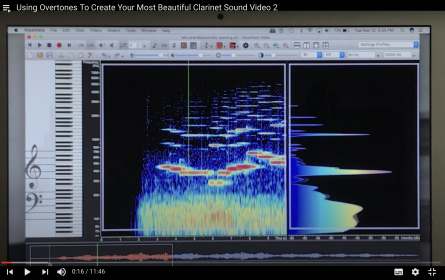
The timbre of a tone is determined by the ratio of the fundamental (1st partial), overtones, and noise components. The image of all partials, also called the overtone spectrum, changes over time. This is also relevant as a parameter of timbre.
Russel Harlow explains the connection between overtone spectrum, embouchure technique, and timbre using the example of a clarinet solo by Ralph McLane (see video on the left). For more sound examples see below.
Sense of Hearing and Sound Samples
Hearing, one of the five human senses, should always accompany practicing and making music as a critical-auditory perception, and should occur in a constant cycle of comparing what has just been heard with the previously defined idea of the tonal event. Timbre, intonation, Dynamics, articulation are critically assessed and refined through the interaction between auditory perception and proprioception.
The subjective perception of timbre underlies aesthetic decisions, which in turn are strongly influenced by the current cultural environment and fashion trends. Over the course of the 20th century, the tonal differences between the different national schools levelled out, and a rather dark and soft tonal ideal became established internationally (see also Stephanie Angloher, 2007[1]).
How the sound aesthetics within the French School changed over time can be traced through historical recordings. For example, the sound ideal of the "old French school" around 1920, collected on the LP The French Clarinet School - Revisited[2] differs clearly from that of the French school around 1960.
Old French School
Prospère Mimart, played with double-lip embouchure. Sound example: Schubert, Der Hirt auf dem Felsen (1915?)[3].
Gaston Hamelin, Debussy, Première Rhapsodie (1933) [4]
Auguste Perrier
pupil of Charles Turban, played with double-lip embouchure. Sound example: Armand Bournonville, Fantasie-impromptu in C-Sharp Minor, Op. Posth. 66 (1928)[5]·
French-American School
[Embouchure#Double-lip Embouchure|Double-lip embouchure]]
Ralf McLane, pupil of Gaston Hamelin, played with double-lip embouchure. Sound example: Mozart Clariet Quintett KV 581 (1952)[6]
New French School
https://fr.wikipedia.org/wiki/Ulysse_Delécluse Ulysse Delécluse], pupil of Auguste Perrier, changed technique and played with a single embouchure. Sound example: Carl Maria von Weber, Grand Duo Concertant (1951?)[7]
French School today
Nicolas Baldeyrou, (alumnus of Michel Arrignon, who in turn was an alumnus of Ulysse Delécluse) Sound sample 1: Debussy Rhapsodie, Orchestre Philharmonique de Radio France, Myung-Whun Chung, Nicolas Baldeyrou clarinet (2015)[8]
Sound sample 2: Rachmaninov Vocalise | Nicolas Baldeyrou on a boxwood clarinet! (2020)[9]
Historical Sources
Valentin Roeser
This is the earliest source. Roeser (1764)[10] already points out the different timbres that result according to the different tunings of the clarinets. He recommends using the honed clarinet in E and F only for "noisy pieces"; in the scale of the larger clarinets, the clarinet in G (alto position), has the softest timbre.
„Celles en E, si, mi et en F, ut, fa sont très aigues et l'on ne s'en sert dans L'orchestre que pour les pièces à grand bruit. Celles en G, re, sol est la plus douce espèce, mais on en trouve rarement, parce qu'elle n'est pas absolument nécessaire, attendu, que pour jouer en G, re, sol, on peut s'en servir d'autres, comme nous le verrons par la suite.“
„The [clarinet] in E, b, e and F, c, f [the lower case letters indicate the appropriate keys] are very high [pointed and sharp] and are used in the orchestra only for loud pieces. Those in [clarinet] in G, d, g are the sweetest kind, but it is seldom found because it is not essential, for it is expected that others may be used for playing in the [keys] D and G, as we shall see later.“
Christian Friedrich Daniel Schubart
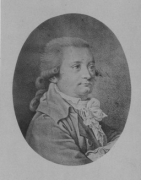
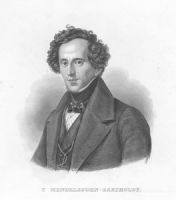
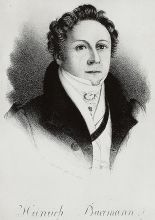
Christian Friedrich Daniel Schubart (c.1777) associated the clarinet with "feeling melted in love."
„Der Ton ist so süß, so hinschmachtend, und wer die Mitteltinten [dynamische und klangliche Mittelstufen] darauf auszudrücken vermag, darf seines Sieges über die Herzen gewiß sein.“
„The tone is so sweet, so languorous, and he who is able to express the middle-tones [dynamic and tonal middle-tones] on it may be sure of his victory over hearts.“
„Ich gäbe zu Zeiten (z. B. jetzt) ganz Paris drum, nur einen Augenblick jene süße Welt bezaubernder Töne, Tönchen und Tönchenchenchen hören zu können, die Deinem hölzernen Instrumente so luftig, duftig, weise, leise, friedlich, niedlich, lebend, bebend, fließend, sprießend, grüßend, um- schließend entströmen und sehr gut klingen.“
„I would give all of Paris at times (e.g. now) to be able to hear just for a moment that sweet world of enchanting tones, little tones and very little tones that emanate from your wooden instrument so airy, fragrant, wise, quiet, peaceful, cute, lively, quivering, flowing, sprouting, greeting, and sound so very good.“
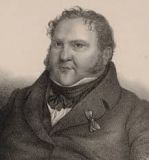
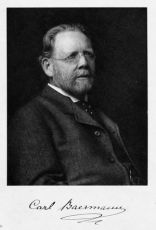
„Le plus beau timbre est celui qui réunit la douceur à l’éclat.“
„"The most beautiful timbre is that which unites softness with brilliance.“
Carl Baermann (1810-1885)
{{Zitat |Text = Da der Ton das Mittel ist, durch welches der Künstler zu dem Zuhörer spricht, so muss auf Tonbildung und Veredelung die grösste Mühe und Sorgfalt verwendet werden [...] Schön ist der Ton, wenn er einen vollen, vibrierenden, und metallartigen Klang hat und in allen Nuancen und Lagen denselben Charakter behält, bei grösster Fülle seine Schönheit nicht einbüsst und durch Schrille oder Schärfe keine unangenehmen Eindruck hinterlässt; er muss so ausdrucksvoll und biegsam sein, dass er in den zartesten Stellen bei allen Schattierungen sich leicht und bindend nüancieren lässt, mit einem Wort, der schönsten Frauenstimme ähnelt. Doch wenn der Ton auch alle diese Eigenschaften besitzt und es fehlt ihm sein eigentliches Wesen, das "göttliche", welches der Mensch als die Garantie seiner Bestimmung in sich trägt, "die Seele", so ist alles Bemühen und Streben wirkungslos, das diese gefrorene Musik von dem Feuer des Prometheus nicht erreicht wird.“ | Übersetzung = "Since the tone is the means by which the artist speaks to the listener, the greatest effort and care must be taken in tone formation and refinement [...]. The tone is beautiful when it has a full, vibrating and metallic sound and retains the same character in all nuances and registers, does not lose its beauty with the greatest fullness, and does not leave an unpleasant impression through shrillness or sharpness. It must be so expressive and flexible that it can be easily and bindingly balanced in the most delicate passages with all shadings. In a word, it resembles the most beautiful woman's voice. But even if the tone possesses all these qualities and lacks its actual essence, the "divine," which man carries within himself as the guarantee of his destiny, "the soul," all effort and striving is ineffective, that this frozen music is not reached by the fire of Prometheus." |Autor = Carl Baermann | Quelle = Vollständige Clarinett-Schule (1861) | lang = dt | ref = [14]
Control over timbre must be considered as an important aspect of basic technique: Carl Baermann simultaneously demands a malleability of sound: the sound must not be rigid or frozen ("gefroren") in its beauty, but lively and capable of modulation.
Hector Berlioz (1856)
„Les instruments à anche simple tels que les clarinettes et le Cor de basset, constituent une famille dont la parenté avec celle de Hautbois n’est pas aussi rapprochée qu’on pourrait le croire. Ce qui l’en distingue surtout [par] la nature du son. Les clarinettes, en effet, ont dans le medium une voix limpide, plus pleine. Plus pure que celle des instruments à anche double n’est jamais exempt d’une certaine aigreur ou âpreté, plus ou moins dissimulé par le talent des exécutants. Les sons aigues de la dernière octave à partir de l’UT au-dessus des portées, participent seuls un peu un peu de l’aigreur des sons forts du Hautbois, pendant que le caractère des sons les plus graves, se rapproche, par la rudesse des vibrations, de celui de certaines notes du Basson.““
„Single-reed instruments such as clarinets and basset-horns are not as closely related to the oboe family as one might think. What distinguishes it above all is the nature of its sound. Clarinets generally have a clear, fuller voice. More pure than that of double-reed instruments it is never free of a certain bitterness or harshness, more or less hidden by the talent of the performers. Only the high sounds of the last octave from the C above the stave hold a little of the bitterness of the strong sounds of the oboe, while the character of the lower sounds, due to the harshness of the vibrations, is close to that of certain notes of the Bassoon."“
For a further source on timbre, see: Joseph Fröhlich (1822)[16]
Didactics of Timbre, Contributions by Interviewees
Defining one's own sound verbally
Sylvie Hue considers it one of the most important tasks to teach pupils to listen to themselves. They must learn to critically evaluate their own sound, to describe it, and to form their own aesthetic judgement.
For Frédéric Rapin, sound must always have a clearly definable core. The sound vibrates around this core. This concept promotes presence, color and elegance in the playing and creates the prerequisite for intoning the sound. It is essential to perform the etudes, scales, and chord studies with the best possible sound quality, i.e. with consciously controlled timbre.
Alain Billardis convinced that in order to describe timbre and sound quality, several characteristics must always be mentioned, specified by supplementary adjectives. The effect of an artistically valuable sound quality ultimately remains entrenched in the metaphysical. What triggers the listener's emotions and is ultimately to be striven for are the vibrations of the music and the vibrating of the air.
François Benda sets himself the goal of achieving a homogeneous timbre across all pitches. The sound must not be dull at the bottom and may not be sharp and pointed at the top.
For Steve Hartman, knowing how to combine all registers with a homogeneous timbre is the basis of phrase formation. Only this makes it possible to draw a tonal line without individual notes standing out uncontrollably. However, it is also important for the different registers to maintain their independent character. In order to achieve artistic quality, the sound should be dynamic, colorful, and malleable at all times. In terms of playing technique, one should have the flexibility to match the musical context, projecting the sound well in soloistic passages, but blending tonally with other colors in a woodwind or string section.
James Campbell points out that the player always perceives his own sound as brighter than do the listeners in the hall. A seemingly bright sound produced with a [[Embouchure#Increased Air Speed in the Area of the Reed Tip
|quick stream of air]] is perceived in the hall as darker and rich in overtones. In his lessons, he pays special attention to the changes of register, whose tonal control is achieved through differentiated vowel shaping.
Honing the ear
Alain Damiens hones the ear by dealing with the softest sounds and noises. As an example, he mentions the composition "Dal Niente" by Helmuth Lachenmann[17], where ear sensitivity must be used to perform differently colored sounds through various vowel shapes. As a further exercise to refine the ear, Alain recommends "scanning one's own sound with the ears for overtones." This didactic idea is also used by Russel Harlow on the basis of Ralph McLane's sound analysis (see above). He places this analysis in direct connection with the double-lip embouchure.
Technique of Sound Coloring
Vowels and Formants
See also Voicing and Singing
The Wikipedia article[18] defines formants as "the broad spectral maximum that results from an acoustic resonance of the human vocal tract." The Online Lexikon<ref>Spektrum.de paraphrases the term as "the area in the sound spectrum in which sound energy is concentrated, regardless of pitch." And further: "In the sound of musical instruments, formants form a vowel-like timbre typical of the instrument."
The dictionary Britannica defenses: "The resonant frequencies of the vocal tract are known as the formants."
In order to shape the sound and to find an individually optimal timbre, Ernesto Molinari has his students work and experiment with formants - like Harri Mäki, he seeks an optimal vowel shaping for the desired timbre.
Frédéric Rapin lists the opening of the throat as an important pillar in sound shaping and timbral control. This, along with the shape and position of the tongue, can be assigned to voicing. When opening the pharynx, the tongue - unlike in speech and singing - must be positioned so that it can articulate at the tip of the reed. Through critical listening, the tongue and soft palate must be brought into a position and shape that produces the best tonal result. The difficulty is in modifying the oral cavity, pharynx, and tongue in the best possible way, regardless of the embouchure of the lips. Opening the nasal cavities will add resonance to the sound. Furthermore, the individual physiognomy of the mouth also affects the timbre: the size of the teeth and the lips, the shape of the chin, the texture of the mimic musculature.
James Campbell's priority is to have a focused, well-projected sound in all registers. Like Harri Mäki, he works with his students to find the appropriate tongue shape and position for each note and register, to automate it, and to adjust it immediately during the performance according to the pitch.
Double-lip Embouchure
Richard Stoltzman switched from the single embouchure to the double-lip embouchure only after his master's degree, because of being able to control the timbre better with this technique. He emphasizes that this change, which he learned in lessons with https://en.wikipedia.org/wiki/Kalmen_Opperman Kalmen Oppermann] was not easy.
David Shifrin's first teacher, James Callas, who was in turn a pupil of Daniel Bonade, played with a double-lip embouchure and was convinced that this was the best basis for a colorful sound and for good legato. Shifrin felt that his tone was not strong enough in ensemble playing and too bright in forte, and therefore switched to the normal embouchure. However, he retained the same technique of shaping the throat and oral cavity associated with the double-lip embouchure as a sound-relevant element of tone formation.
Steve Hartman switched from a single embouchure to a double-lipe embouchure in search of more focus and flexibility in his sound. This changed the internal shaping of the entire mouth cavity, which had a positive effect on shaping the sound. In this, https://en.wikipedia.org/wiki/Ralph_McLane Ralph Mc Lane] was an important role model.
Shaping the Sound on the Basis of the Low Notes
James Campbel has his students play a lot of tone exercises in the chalumeau register. If a full, round sound is achieved on there, it will serve to play a well-shaped sound in the clarino and altissimo registers.
Resonance Fingerings
If the musical context permits, [Milan Rericha#Alternativgriffe|Milan Rericha]] and Harri Mäki play the "short" notes short notes (g1 bis b1) with resonance fingerings. In this way, in combination with suitable voicing, the overtones can be amplified, resulting in a more powerful timbre.
General posture
Michel Westphal as well as Heinrich Mätzener attach great importance to an upright, relaxed posture. The mouthpiece must be brought to the embouchure, the head should never lean forward towards the mouthpiece. Heinrich Mätzener et al. showed in a study supported by SNF Studie (Lucerne, 2013) that sound production combined with beneficial sound qualities can be defined as a body-raising action.
The Initial Attack of the Sound
Eli Ebanas well as Alain Billard attach great importance to the conscious forming of the attack. It shapes the perception of the timbre of the sound. It is therefore a matter of carefully and consciously shaping the articulation and voicing, as well as the air flow of each new note.
François Benda's first aim was to produce a sound with as little noise as possible. A suitable reed-mouthpiece combination, as well as a coordinated and balanced embouchure and breathing technique, must convert the entire amount of air used for sound production into sound. The teacher's instructions must take into account the wind player's individual dispositions and must not diminish the student's personality.
Sylvie Hue nennt mentions as a simple means of freeing the sound from noise and focusing it, to make the air flow not as "warm air" but rather as "cold air." Gerald Kraxberger has the same idea, formulated differently: he is careful not to open the throat too wide, but rather to focus the sound "at the front of the embouchure."
Learning through Imitation
Philippe Cuper and Seunghee Lee recommend that every student listen to as many recordings as possible. In this way they can train their critical listening and develop their own sound aesthetics. It is important to have role models, and these may also be imitated. With their own personal character, which must also be encouraged, the student will eventually be able to develop their own individual sound.
Ernst Schlader is convinced that the specific musical movements that produce a lighter or darker timbre (as well as higher or lower intonation) can hardly be described. Very small muscles with subtle movements in the throat and vocal tract are at play. Auditioning, playing together, and imitating as are the didactic means for this. The student must respond through their hearing and acquire these skills and music-making movements through implicit learning].
Flexibility
Paolo Beltramini and Thomas Piercy expect that depending on the style and depending on the composers' requirements, the timbre can be adjusted. Brahms must not sound like Stockhausen; Copland must not sound like Brahms. On the concert stage, it is advisable to look for a darker sound; in the orchestra pit, a brighter sound is advantageous. John Moses also prioritizes a technique of sound production that allows the timbre to be adjusted according to style.
Fashion Trends
Michel Arrignon states for the time being that he does not want to take sides with one aesthetic conviction or another. However, he observes - worldwide - a current obsession with striving for a dull, smoothed but also impersonal sound at the expense of other musical qualities. Older recordings, such as the excellent, elegant, and finely articulated interpretations of Jacques Lancelot, are rejected because of their bright sound. Jacques Lancelot (sound example: Jacques Lancelot) was followed by other performers and professors, such as Guy Deplus, who advocated a dark sound. What counts in the end is not the timbre. The sound is only a means to an end – namely, to bring the music closer to the audience.
David Shifrin observes a standardization of the sound ideal among young prospective students at Yale in comparison to international clarinetists. The choice of mouthpiece and reeds are foregrounded.
Pascal Moraguèsdescribes how the timbre of the French school has changed since his student days with Ulysse Delécluse, as a representative of the very bright French clarinet sound, to today's sound ideal of a dark tone that leans towards German and Austrian models.
James Campbell confirms this and observes a standardization of the sound ideal since the 1970s. National schools are still audible, but to a much lesser extent. A "mid-Atlantic sound," a kind of international sound, has established itself, and the technical level of clarinetists has increased considerably.
David Shifrin highlights the fact that his generation had access to a lot of sound recordings from many different clarinetists and schools. This is how he developed his own idea of sound. It was striking that many of his teachers had taken lessons with Daniel Bonade, but had found a very different personal sound. In the USA, all kinds of influences came together: the French, German, and Italian schools, as well as influences from Europe and the aesthetics of jazz, could all have a formative effect on a budding musician, depending on their affinity. Today, a standardization of style and sound ideal can be observed and it is more difficult to distinguish between the German and French systems in terms of sound. The search for an "ideal sound" can last a lifetime.
Philippe Cuper also notes a standardization of timbres.
Setting Priorities
Paolo Beltramini makes a strong case for good intonation first and foremost; it is more important than whether a tone is brighter or darker. Furthermore, the sound must project well, and the musical message must always be in the foreground.
For Eli Eban, a centered sound, always consciously shaped, is of primary concern.
Thomas Piercy seeks first and foremost the musical statement. In doing so, he also risks losing control of the sound.
Individual Dispositions, First Language
Paolo Beltramini and Richard Stoltzman observe differences in vowel formation depending not only on a player’s physiognomy, but also on their first language. Even though national schools have converged greatly, they still exist today because of the different linguistic areas. A Japanese "o," for example, sounds uniform and round throughout. In other languages there are already quite different colorings within a vowel, which has a direct effect on the sound formation.
Instrument, Mouthpiece, and Reeds
Philippe Cuper, Sylvie Hue: it is the teacher's task to support the student in choosing a suitable instrument and mouthpiece, as well as reeds.
Steve Hartmans replaces the reed ligature with a reed string depending on the desired sound.
Richard Sotltzmanquotes his teacher Kalmen Opperman, who rated the sound shaping in the mouth cavity as more important than the quality of reed and mouthpiece: "the reed vibrates, but you make the sound!"
David Shifrin warns that harder reeds may produce a soft and dark sound, but that variability of timbre and articulation, as well as control over intonation, are lost. He observes that young prospective students at Yale attribute the most important role in producing a "universal sound" to the mouthpiece and reeds.
Jérôme Verhaeghe: Mouthpieces with a rather narrow rim produce a brighter sound, richer in overtones; a wide rim darkens the sound but requires more effort in sound production. Experiences at the Opera Garnier and feedback from conductors confirmed Verhaeghe’s feeling that the choice of the "lighter" material is the right one. Not only does one hear a greater richness of color from the outside, but the lightness of the playing is also noticeable. [[Jérôme Verhaeghe#La prédominance d’une sonorité personnelle|Jérôme Verhaeghe] is also convinced that physiognomy has a greater influence on the timbre than the choice of mouthpiece and reeds.
For François Benda , different instruments and the mouthpieces and reeds that go with them, which in turn have to be blown differently, produce different timbres.
Michel Westphal mentions that very good tonal results can also be achieved regardless of the material, age, or construction of the instruments.
References
- ↑ Angloher, Stephanie. 2007. Das deutsche und französische Klarinettensystem eine vergleichende Untersuchung zur Klangästhetik und didaktischen Vermittlung. Zugl.: München, Univ., Diss., 2007.[1]
- ↑ Cahuzac, Louis, Folmer Jensen, Isabel French, Prospère Mimart, R. Hughes, Gaston Hamelin, Pierre Coppola, et al. 2000. The French clarinet school - revisited. [Place of publication not identified]: Grenadilla.
- ↑ YouTube. Retrieved September 24,2020
- ↑ YouTube. Retrieved September 24, 2020
- ↑ YouTube. Retrieved November 16, 2020
- ↑ YouTube. Retrieved November 16. 2020
- ↑ Gallica. Retrieved September 24, 2020
- ↑ YouTube. Retrieved November 16, 2020
- ↑ YouTube. Retrieved November 16, 2020
- ↑ 10,0 10,1 Roeser, Valentin. Essai d’instruction pour ceux qui composent pour le cor et pour la clarinette. Paris 1764 p.3,4 [2]. Retrieved November 19, 2020}
- ↑ Schubart, Ludwig. Ideen zu einer Ästhetik der Tonkunst 1806, S.320. Bayerische Staatsbibliothek digital. Retrieved November 11, 2020
- ↑ Brief Felix Mendelssohn Bartholdys an Heinrich Baermann vom 16.4.1832, zitiert nach Ludwig Nohl, Musiker-Briefe, S. 311.
- ↑ Frédéric Berr: Traité, S. 27. Duverger, Paris, 1836
- ↑ Carl Baermann: Vollständige Clarinett-Schule: von dem ersten Anfang bis zur höchsten Ausbildung des Virtuosen; in 2 Theilen und 4 Abtheilungen verfasst; [1,1]. Johann André, Offenbach a/M 1861. Bayerische Staatsbibliothek, S 33.Bayerische Staatsbibliothek digital. Retrieved November 15, 2020
- ↑ Berlioz, H., & Berlioz, H. (1970). Traité d'instrumentation et d'orchestration: [1843] : [op. 10] : nouvelle édition suivie de ; "L'art du chef d'orchestre" : [1856]. Westmead: Gregg Internat. Publ. p.157 imslp. Retrieved November 11, 2020
- ↑ Fröhlich, Franz Joseph. 1811. Vollständige theoretisch-pracktische Musikschule für alle beym Orchester gebräuchliche wichtigere Instrumente. IIte Abteilung, S.7, §1. Retrieved November 15, 2020}
- ↑ Lachenmann, H. (2005). Dal niente (Interieur III): Für einen Solo-Klarinettisten = for a solo clarinet-player. Wiesbaden: Breitkopf & Härtel.
- ↑ Formants. Retrieved November 17, 2020
